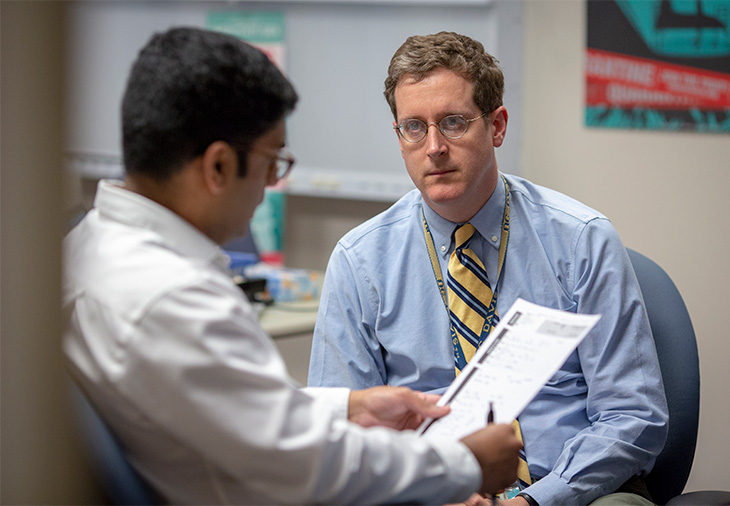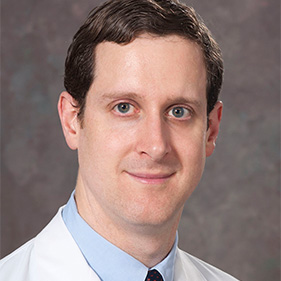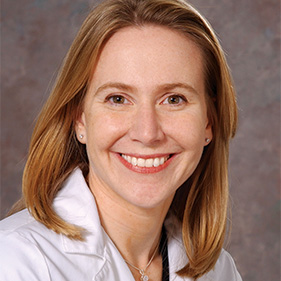UC Davis explores emergency-primary care team partnership to improve opioid treatment
NIH grant to help boost long-term buprenorphine use in vulnerable opioid users
The National Institute on Drug Abuse has awarded UC Davis a grant to develop and test a team-based strategy to improve treatment for patients with opioid use disorder (OUD). The focus will be on the long-term use of buprenorphine, a potent treatment for OUD. The $1 million grant funded by the National Institutes of Health (NIH) will help design an intervention that supports low-income and other vulnerable patients who seek OUD care in emergency departments (EDs).
“We are thrilled to work on a multiteam strategy to improve buprenorphine adherence for patients who start their OUD treatment in the emergency department. It is important to coordinate their care and reduce their risk of opioid overdose,” said primary care physician Stephen Henry. Henry is an associate professor of internal medicine, faculty member affiliated with the Center for Healthcare Policy and Research, and co-principal investigator (co-PI) on the project.
The overall objective is to develop a blueprint that hospitals in California and across the U.S. can use to improve OUD treatment for patients who start buprenorphine in EDs.

Combined opioid overdose treatment
Opioid-related deaths continue to rise in the U.S. According to the Centers for Disease Control and Prevention (CDC), around 9,000 people die in the U.S. every month from a drug overdose – 75% of these deaths involve opioids.
Many patients who lack access to traditional addiction treatments end up seeking care for their OUD in the ED.
“It is estimated that 5% of patients who come to an ED for a non-fatal drug overdose die within one year. That is similar to the heart attack mortality rate,” Henry explained. “Treating patients with buprenorphine in the ED has tremendous potential to save lives, but only if patients continue taking it long term.”
Buprenorphine is a highly effective treatment for opioid use disorder. It mimics the effect of the abused drug, reduces drug cravings and withdrawal symptoms, and helps prevent relapse.
It is estimated that 5% of patients who come to an ED for a non-fatal drug overdose die within one year.”—Stephen Henry, UC Davis primary care physician
In 2018, California established CA Bridge to expand medication for addiction treatment in Emergency Departments. This state-funded program has been adopted by nearly 300 California hospitals.
CA Bridge offers patients with OUD who seek care in an ED buprenorphine the same day, evaluation by a drug and alcohol counselor, and referral to primary care. This combined treatment plan has significantly increased buprenorphine treatment rates.
This new project seeks to improve the impact of CA Bridge by developing and testing strategies to boost long-term buprenorphine adherence for patients after they leave the ED.
Aimee Moulin, professor of emergency medicine and co-PI on this award, is a co-director of CA Bridge.
“For patients with opioid use disorder, starting and maintaining treatment is a life-saving intervention,” Moulin said. “Effective transitions of care between the ED and primary care are critical for reducing overdose deaths and helping patients move towards recovery.”

The UC Davis researchers will test an approach that encourages better coordination between ED and primary care teams. Their strategy involves ongoing partnerships rather than one-time handoffs. They will assess if these partnerships improve buprenorphine treatment and patient retention rates.
The team will collect and analyze data from two CA Bridge sites to identify factors linked to the successful implementation and sustainability of treatment.
Effective transitions of care between the ED and primary care are critical for reducing overdose deaths and helping patients move towards recovery.” —Aimee Moulin, professor of emergency medicine and psychiatry
This grant will set the stage for a subsequent $4.8 million grant after the team meets certain milestones.
“This initial grant will focus on intervention development,” said co-PI Shin-Ping Tu Tu, a professor in the Department of Internal Medicine, is a co-director of the Clinical and Translational Science Center’s Healthcare Delivery Science program. “The next grant will test our implementation strategy’s impact on the rates of buprenorphine initiation and sustained treatment 3, 6 and 12 months after patients leave the ED.”
The team will conduct interviews with patients, staff and managers at each emergency department and primary care clinic before and after the project is put into place.
The Center for Healthcare Policy and Research’s mission is to facilitate research, promote education, and inform policy about health and health care. The goal is to improve the health of the public by contributing new knowledge about access, delivery, cost, quality and outcomes related to health care and providing rigorous evidence to policymakers and other stakeholders. CHPR executes its mission through interdisciplinary and collaborative research; education and career development; and research synthesis and dissemination. For more information, visit health.ucdavis.edu/chpr.



